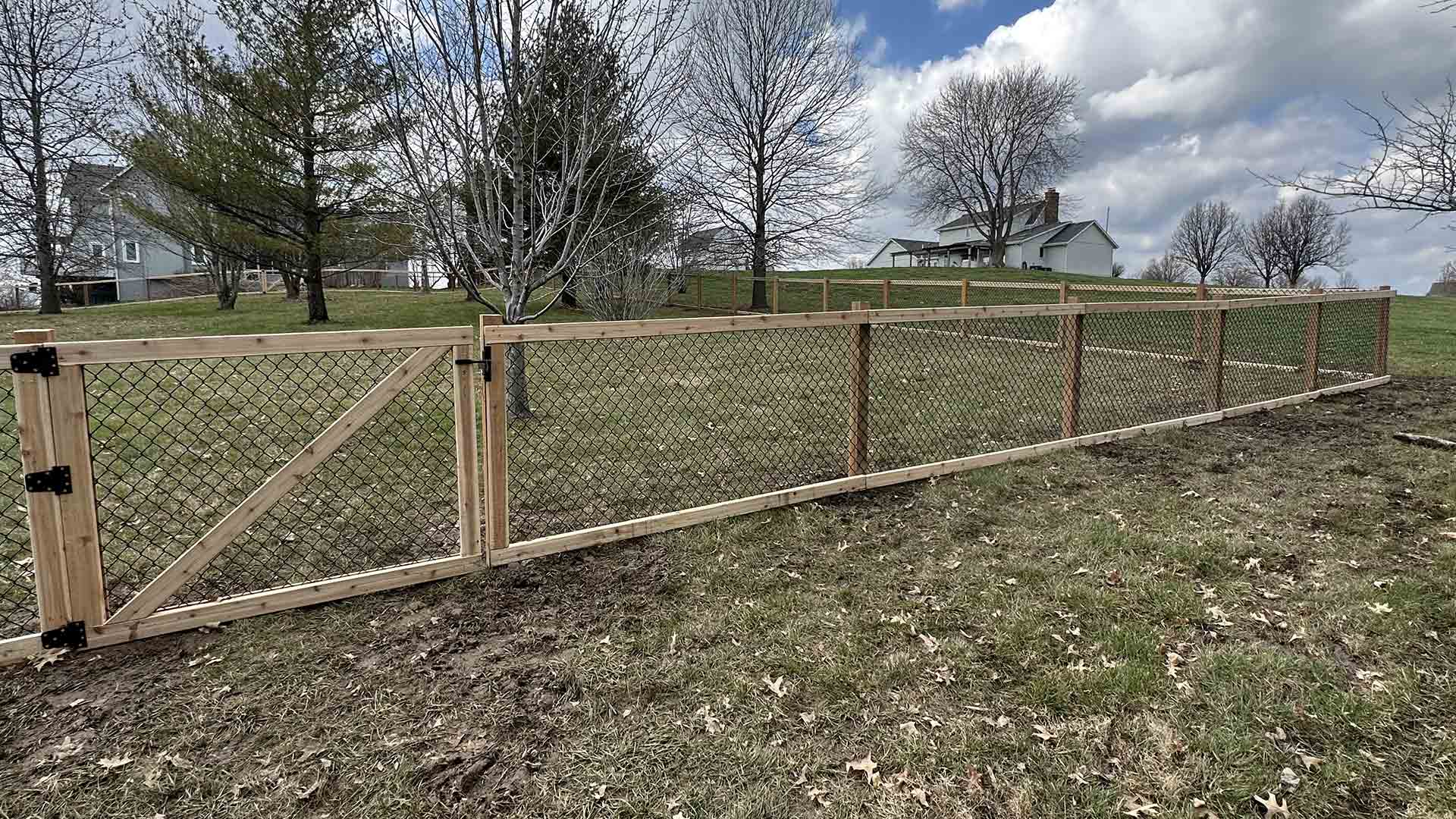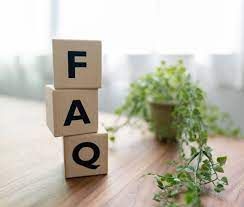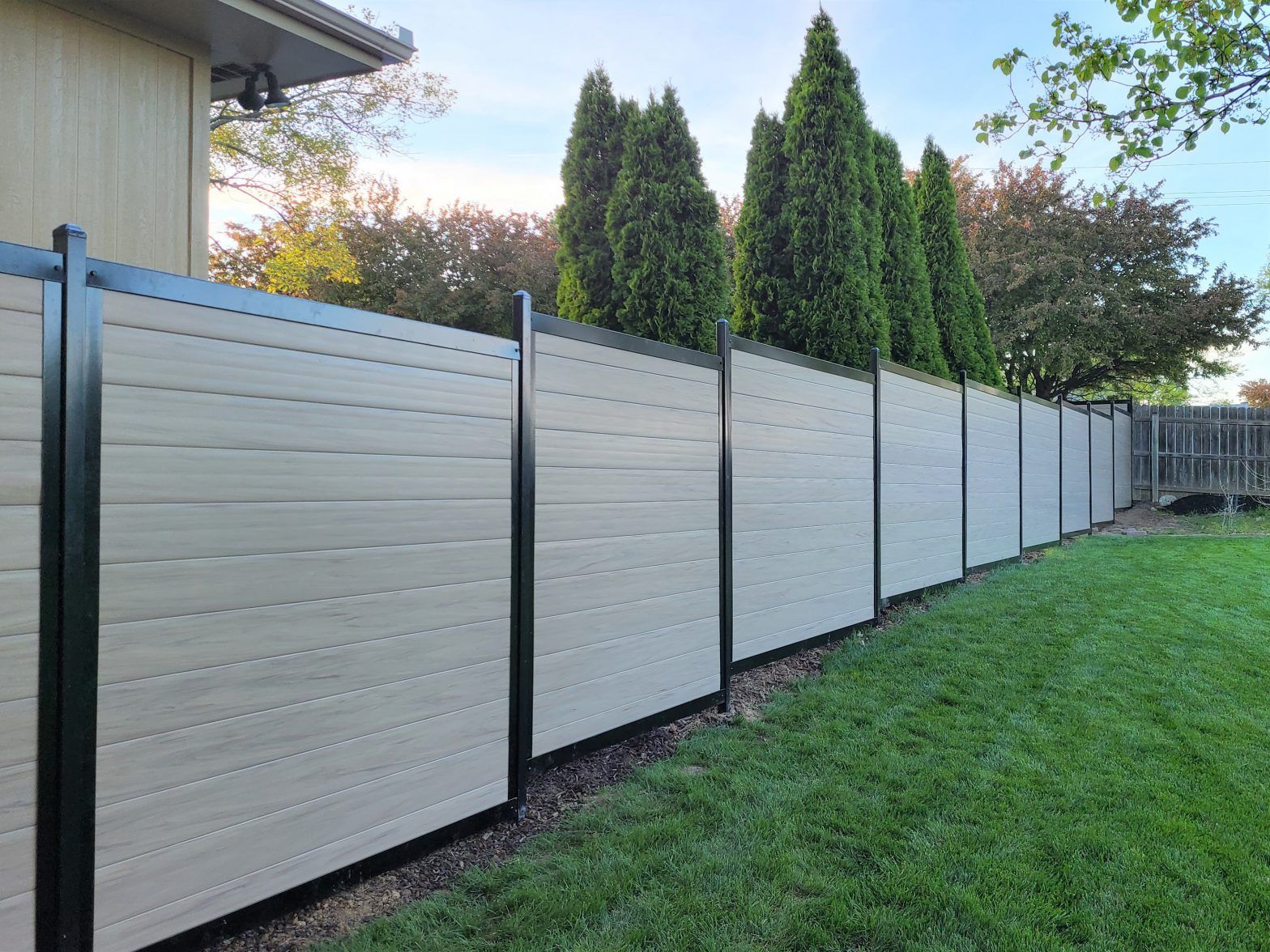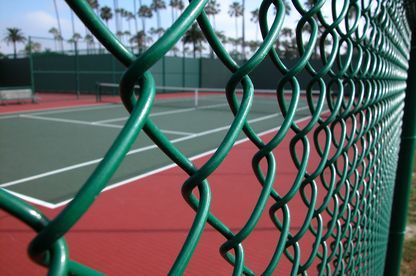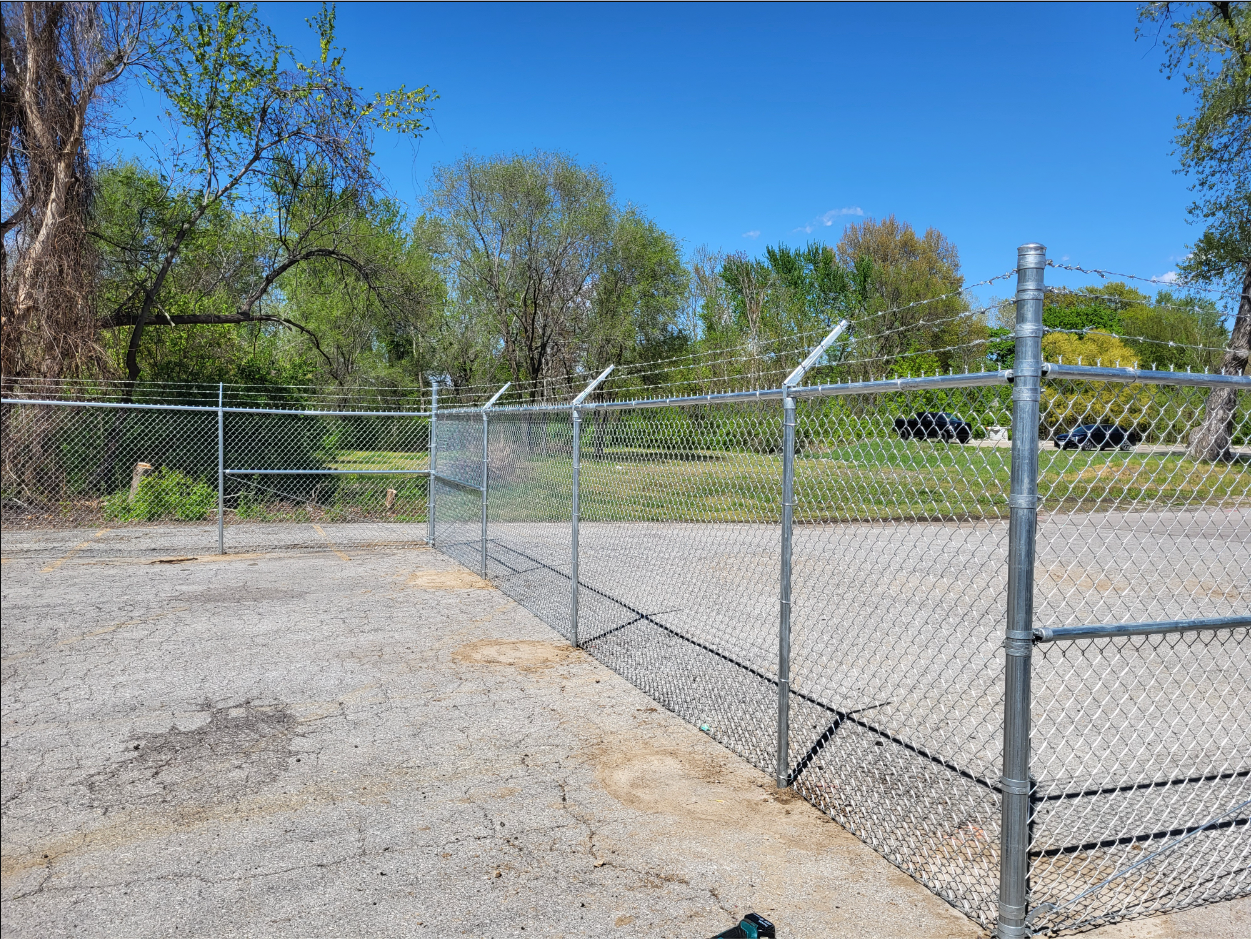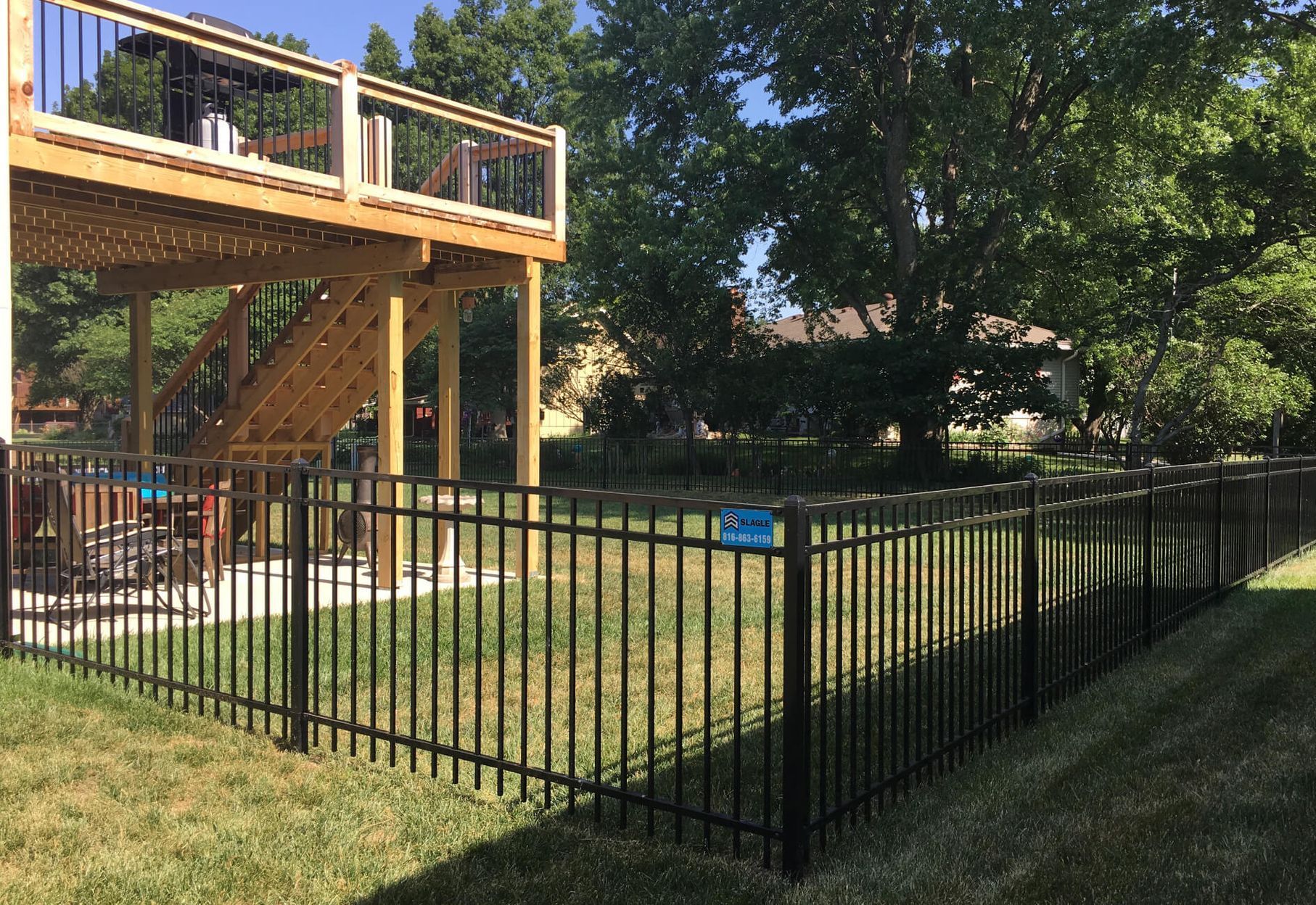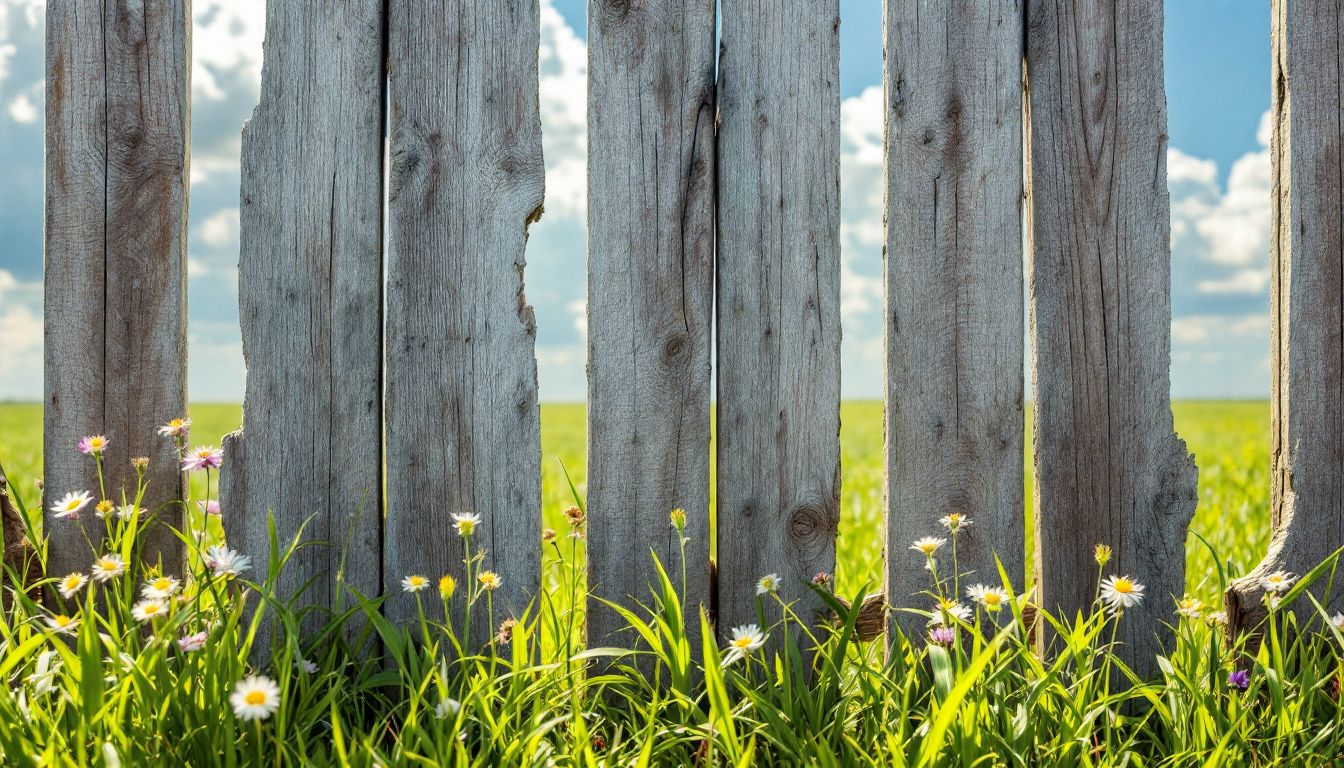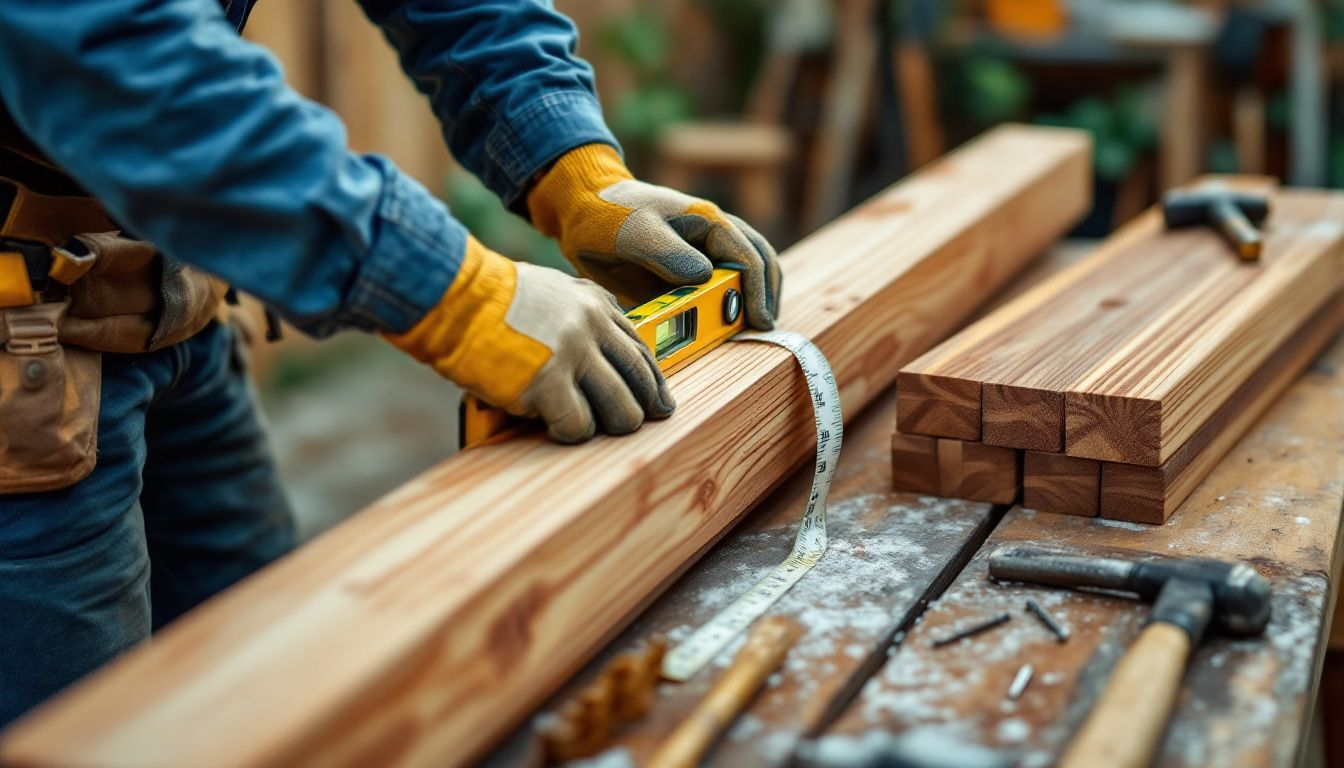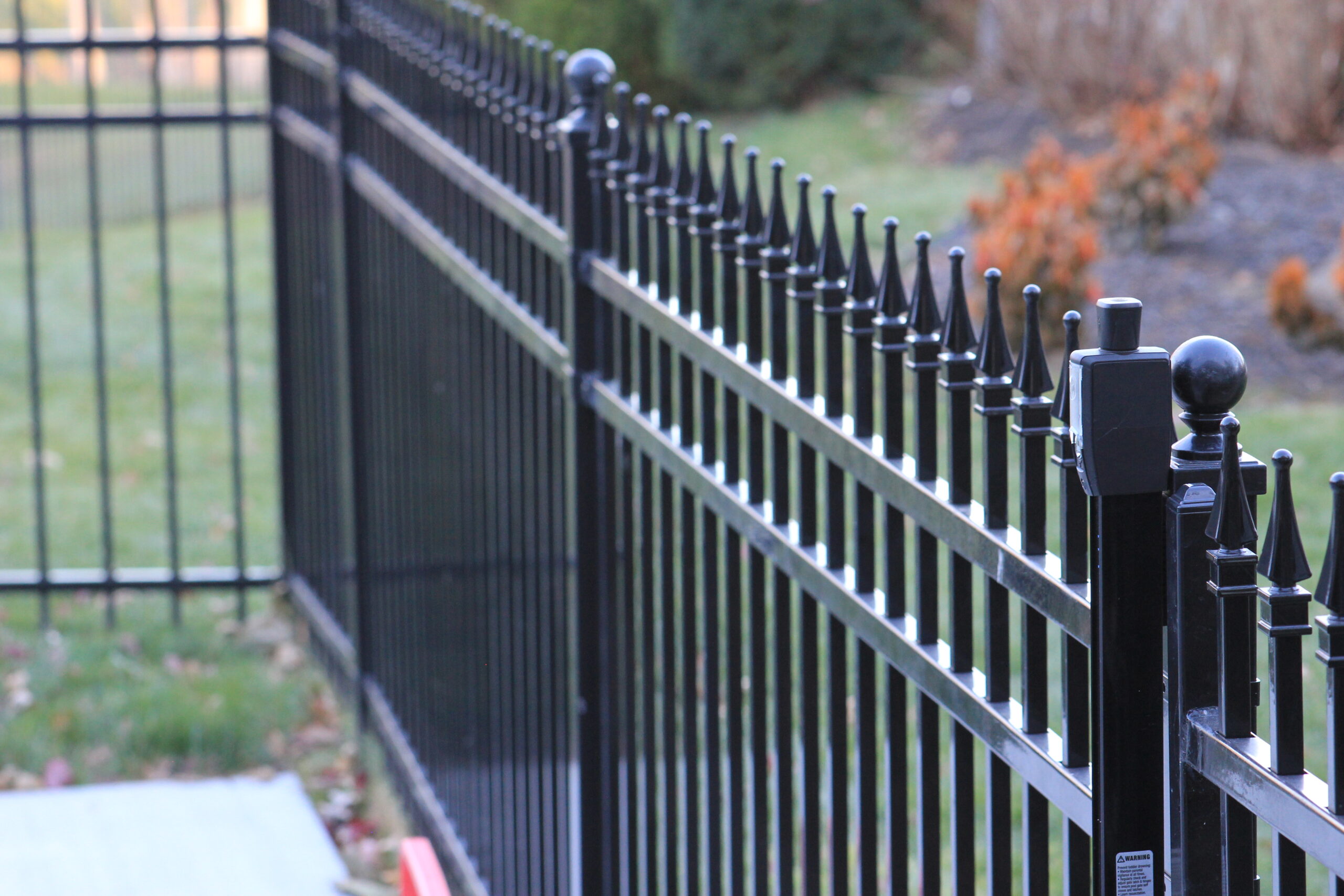Need a durable and cost-effective way to secure your property? A fence chain link offers excellent security while remaining affordable. In this guide, we’ll explore why a fence chain link is a great option, the different types available, the key components, and how to install and maintain them.
Key Takeaways
-
Chain link fencing offers a durable and affordable security solution, suitable for both residential and commercial use, available in galvanized and vinyl-coated types.
-
Key components such as posts, rails, and gate hardware determine the stability and security of chain link fences; proper installation and maintenance are crucial for longevity.
-
Customization options, including colors, decorative elements, and additional security features like HDPE slats and barbed wire, enhance both the functionality and aesthetic appeal of chain link fencing.
Understanding Chain Link Fencing

Chain link fencing is a widely used option for both homes and businesses due to its affordability and versatility. The structure of a chain link fence includes a framework of steel posts and a mesh made of interwoven metal strands forming a diamond pattern. This type of fencing is often referred to as a hurricane or cyclone fence.
One of the main reasons people choose chain link fences is for perimeter security while still allowing visibility, making them suitable for keeping children and pets safe. In commercial settings, chain link fencing is commonly used for security in applications ranging from dumpster enclosures to large construction sites.
Chain link fencing can be categorized primarily into two types: standard galvanized and vinyl-coated, each offering distinct benefits and catering to different aesthetic and functional needs. Understanding these types is crucial for evaluating their durability and effectiveness.
Chain link fencing is favored for its affordability and durability across various applications. Its ability to balance cost and functionality makes it an excellent choice for many property owners.
Types of Chain Link Fences

Chain link fences consist of several key elements including the fabric, posts, rails, gates, and optional accessories. Each component contributes significantly to the overall durability and functionality of the fence.
Knowing the different types of chain link fences aids in selecting the best option for your needs.
Galvanized Chain Link Fabric
Galvanized chain link fabric is coated with zinc, providing a strong defense against rust and corrosion. This protective zinc layer makes the fence particularly beneficial in various weather conditions, extending its lifespan to several decades with minimal maintenance. Additionally, galvanized steel enhances the durability of the entire structure.
The zinc coating keeps the fence robust and weather-resistant, making it a durable choice for both residential and commercial properties.
Vinyl Coated Chain Link
Vinyl coated chain link fences, available in various colors, enhance visual appeal and blend seamlessly with different surroundings. The vinyl coating not only improves appearance but also increases resistance to weathering, providing an extra layer of protection.
Available in colors such as green, brown, and black, vinyl coated chain link fences enhance both aesthetic appeal and durability against the elements. This makes them a popular choice for homeowners seeking aesthetic improvement and long-term durability.
Residential Chain Link Fences
Residential chain link fences are designed to be cost-effective and straightforward to install, making them a popular choice for homeowners seeking reliable security for their properties. These fences provide a balance of affordability and reliability, making them a favored option for many residential settings.
Installing residential chain link fences is straightforward, providing a secure boundary at a lower cost compared to other materials. Homeowners appreciate these fences for their security features and easy installation.
Key Components of a Chain Link Fence

Chain link fencing can be fortified through various methods, including using thicker wire gauges and different selvage types to increase resistance against breaches. Knowing the essential components of a chain link fence helps in evaluating its durability and effectiveness.
Posts and Rails
The structural integrity of a chain link fence heavily relies on the quality of its posts, which can be made from galvanized or coated materials. Posts serve as the primary support for the fence, ensuring it remains upright and stable under various weather conditions.
Rails connect posts and provide horizontal support, preventing sagging and enhancing durability. Properly aligned posts and securely attached rails are essential for maintaining the fence’s shape and stability.
Gate Hardware
Choosing the right gate hardware, like hinges and latches, ensures the functionality and security of access points. A variety of gate hardware options, such as locks, hinges, and latches, are necessary to maintain security and facilitate smooth operation of access points.
Locks, hinges, and latches are key gate components that ensure smooth operation and security. Choosing the right gate hardware is essential for secure and functional access points in your fencing system.
Barbed Wire Add-ons
Integrating barbed wire at the top of a chain link fence significantly enhances its security, making it harder to climb or breach. This addition is particularly useful in high-security environments like prisons or commercial properties.
Barbed wire arms secure the top of the fence, deterring unauthorized access and enhancing protection. This makes it an excellent option for areas requiring heightened security.
Installation Process

Successful installation of a chain link fence requires careful planning and preparation of the site. Proper installation is key to ensuring the fence’s durability and functionality.
Preparing Your Space
Clearing the installation area of debris and obstacles ensures a smooth setup. Marking the desired locations for corner, gate, and end posts using spray paint will help ensure accurate placement.
Local hardware stores and home improvement centers often carry chain link fencing materials and offer on-site assistance. Some local retailers may also provide delivery services for added convenience.
Installing the Fence
Mark the desired locations for corner, gate, and end posts with spray paint for accurate placement. Clearing the area of debris and marking the layout will help in accurately placing the fence posts.
Setting posts properly is crucial for the stability of the fence. Once the posts are set, the chain link fabric can be attached, followed by securing the rails and adding any necessary gate hardware.
Adding Slats for Privacy
Install fence slats vertically into the chain link for added privacy. Each bag of fence slats typically contains around 78-82 slats, sufficient to cover 10 feet of fencing.
Slats increase privacy and enhance the fence’s overall appearance. This simple addition can transform a standard chain link fence into a more private and visually appealing barrier.
Maintenance and Care
To ensure longevity, chain link fences should be visually inspected twice a year. Regular maintenance is key to keeping your fence in good condition.
Regular Inspections
Check chain link fences every few months for rust, loose fittings, or bent links. Promptly addressing issues can prevent further damage and extend the fence’s life.
Frequent inspections help maintain the integrity and longevity of your chain link fence. Look for signs of rust, loose fittings, or bent links during inspections.
Cleaning Tips
An annual wash with soapy water and a soft brush maintains the fence’s appearance. Clean the fence with mild soap and water yearly to prevent rust and maintain its appearance.
Rust spots should be scrubbed away with a wire brush and treated with rust-resistant paint for protection. A mild detergent and soft brush effectively keep the fence clean.
Repairing Damage
Regular checks should identify loose or bent posts, damaged links, and sagging sections. Immediate repairs, like replacing broken links and tightening loose fittings, help maintain the fence’s integrity.
Replace damaged posts by digging out the old one and setting a new post in concrete. For torn fabric, cut a replacement piece that overlaps slightly and weave it into the existing fabric securely.
Cost Considerations
The cost of a chain link fence varies significantly based on several factors. Knowing these factors helps in making informed decisions and finding budget-friendly options.
Price Factors
Factors influencing the cost include fence height, required length, wire gauge, and additional features. Fence height directly influences material costs, as taller fences need more fabric and posts.
The chain link fabric’s thickness, or gauge, affects price, with thicker gauges costing more but offering greater strength and durability. Complex terrain, such as slopes or uneven ground, increases installation costs due to additional labor and materials.
Labor is a significant cost factor, as skilled installation ensures durability and prevents future issues. Diamond opening size affects both security and price; smaller diamonds can cost significantly more per linear foot.
Budget-Friendly Options
Opting for galvanized chain link instead of vinyl-coated reduces initial costs, though vinyl offers better aesthetics and durability. Choosing a lighter gauge chain link or a larger diamond pattern can also save money.
Using fewer additional features, like privacy slats or decorative elements, can significantly lower the overall project expense. Designing the fence layout with minimal corners can reduce costs.
Enhancing Security with Chain Link Fences

Chain link fences can be fitted with barbed wire to enhance security, especially in high-security environments like prisons.
Customization options can greatly enhance the appearance and functionality of chain link fences.
Adding Gates
Incorporating gates enhances security by controlling access points, ensuring only authorized individuals can enter. Chain link fence gates come in various types, including swing and sliding gates, each serving different security and access needs.
Sliding, swing, and barrier gates are designed for specific access needs in chain link fences. Proper gate hardware, including locks, hinges, and latches, ensures secure and functional access points.
Using HDPE Slats
HDPE slats within chain link fencing enhance privacy and improve security by making it harder to see through. Use HDPE slats to enhance privacy and security, providing a robust barrier alongside the existing chain link structure.
HDPE slats significantly block visibility, improving privacy and adding a layer of security. This makes them an excellent choice for both residential and commercial properties seeking enhanced protection.
Integrating Security Systems
Security systems like cameras and alarms can integrate with chain link fences to enhance surveillance and deter intrusions. Advanced security systems can integrate with chain link fences using video surveillance, access controls, and motion detection.
Linking alarms and cameras with chain link fencing allows for real-time monitoring and quicker responses to potential breaches. This integration greatly enhances overall property protection.
Customization Options
Chain link fences can be configured in various heights and lengths to accommodate diverse property requirements. They are also available in different colors, which helps them blend more seamlessly into their surroundings.
Customizing your fence enhances both its functionality and aesthetic appeal.
Color Choices
Vinyl coated chain link fencing comes in colors like black, green, and brown, allowing homeowners to match their fencing with their landscaping. Selecting the right color for your chain link fence enhances its appearance and complements your property’s design.
Vinyl coated chain link fence kits come in colors designed to enhance the aesthetics of various properties. This allows homeowners to create a cohesive look that blends well with their surroundings.
Decorative Elements
Adding vertical gardens or plants to a chain link fence introduces color and natural textures, transforming its look. Decorative inserts or screens, available in wood, vinyl, or composite, enhance privacy and add visual appeal to chain link fences.
Seasonal decorations like wreaths or themed garlands help a chain link fence complement various occasions throughout the year. Hanging outdoor art or using string lights creates a unique ambiance, turning a chain link fence into an attractive feature.
Meeting Aesthetic Goals
Vinyl coated chain link fencing is available in a variety of colors such as black, green, and brown, enhancing visual appeal. Adding slats to a chain link fence can enhance both privacy and appearance, making the fence look more solid and less industrial.
Adding decorative elements like post caps or lattice work improves the chain link fence’s overall aesthetic, making it more appealing for residential or commercial properties. This lets you meet aesthetic goals while maintaining functionality.
Where to Buy Chain Link Fencing
When purchasing chain link fencing, you have options including local retailers and online stores. Knowing where to buy your fencing helps find the best options and prices.
Local Retailers
Local retailers are a good source for chain link fencing materials, allowing you to see products before buying. Many local hardware stores and garden centers carry chain link fencing materials, often available for immediate purchase.
Shopping locally provides on-site assistance and advice from knowledgeable staff, invaluable during planning and installation. Some local retailers offer delivery services for chain link fencing supplies, enhancing convenience.
Online Stores
Reputable online retailers like America’s Fence Store specialize in chain link fencing supplies and offer direct shipping. Shop online offers convenience and a wide variety of options.
Online stores often offer a wider selection of chain link fencing materials that can be shipped directly to you, making it easier to find what you need. This is particularly useful if you’re looking for specific features or customization options.
Comparing Prices
Knowing the factors affecting the price of chain link fencing helps in making informed decisions. Factors affecting the cost of a chain link fence include materials, size, and additional features.
By knowing these pricing factors and exploring budget options, consumers can find the best deals. To save money on purchasing and installing a chain link fence, consider budget-friendly options that maintain quality.
Summary
Chain link fences offer a durable and affordable solution for securing residential and commercial properties. From understanding the types and key components to installation, maintenance, and customization options, this guide has provided comprehensive insights. Whether you opt for galvanized or vinyl-coated options, incorporate privacy slats, or enhance security with gates and barbed wire, a chain link fence can meet your needs efficiently. Ready to take the next step? Explore your options and transform your property’s security and appearance today!
Frequently Asked Questions
What is the difference between galvanized and vinyl-coated chain link fences?
The main difference is that galvanized chain link fences are coated with zinc for rust resistance, whereas vinyl-coated fences feature an additional vinyl layer that improves both durability and appearance.
How often should I inspect my chain link fence?
You should inspect your chain link fence every few months for rust, loose fittings, or bent links to ensure its integrity and longevity. Regular maintenance helps prevent larger issues down the line.
Can I install a chain link fence myself?
Yes, you can install a chain link fence yourself with the right tools and preparation, but consider professional installation for complex or uneven areas.
What are the cost factors for chain link fences?
The main cost factors for chain link fences are the height and length, wire gauge, terrain complexity, and optional features such as coatings or privacy slats. Understanding these elements can help you budget effectively for your fencing project.
How can I enhance the security of my chain link fence?
To enhance the security of your chain link fence, consider adding barbed wire, using HDPE slats for privacy, installing secure gates, and integrating security systems such as cameras and alarms. These updates will significantly improve protection.










